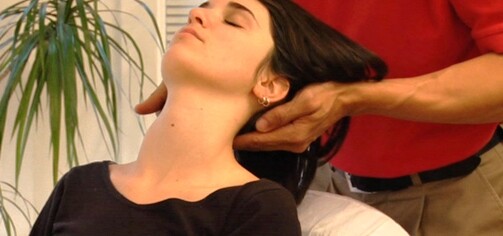
Clinical/Orthopedic Assessment for the Upper Body part 1
Course summary
Clinical/Orthopedic Assessment for the Body
This course is designed for intermediate to advanced and will provide you the skills and base assessment tools to allow you to successfully determine through process of elimination, reasoning and rule-outs the sources of your clients pain and/or dysfunction. This course calls on previously learned information from Skeletal & muscular anatomy including myotomes, dermatomes, in order to determine how to proceed with the client’s treatment. It is important to have a way by which to evaluate the dysfunction or injury the client presents with. Purpose of clinical/Orthopedic assessment is to aid in finding the cause of the clients dysfunction. We want to find the cause and treat the cause -not just the symptoms.
Doctors Diagnose and we as therapists Assess. We evaluate musculoskeletal structures to determine what is involved and where. Participation and completion of this workshop will allow you to return to your practice with the confidence to assess your clients and determine the source(s) of their pain and/or dysfunction. You will be taught technical skills of physical assessment and how to apply them in a logical and thorough manner. Successful physical assessment leads to effective and thorough treatment planning, resolution of your clients pain and/or dysfunction leading to happy, healthy clients and a thriving practice!
Focus for the upper body part 1: will be on the Cervical, Shoulder, Elbow and wrist, Neurological tests and Thoracic Outlet Syndrome. We will focus on selected test along with structure related muscle tests.
Approximately 40 page booklet will accompany the course. Due to the intensity of the course and amount of content all the procedures for testing, areas to assess, and expected results have been summarized to save/eliminate any time spent taking notes. (this is a week long course condensed into 8 hours (not including lunch))
Focus for the Lower body part 1: will be on the Ankle, Knee, Hip & Lumbar, Neurological tests for the Lower Limbs. We will focus on selected test along with structure related muscle tests. Approximately 25 page booklet will accompany the course. Due to the intensity of the course and amount of content all the procedures for testing, areas to assess, and expected results have been summarized to save/eliminate any time spent taking notes. (this is a week long course condensed into 8 hours (not including lunch)
Learning objectives:
1.Demonstrate proficiency in Accessing specific body structures using Active resisted movement
2.Demonstrate proficiency in physically mobilizing and assessing specific body structures (via passive relaxed movement)
3. Identify and demonstrate postural positioning for safe application of assessment techniques
4. Demonstrate and practice verbal cuing to instruct the client during active free movement (no touch)
5. Reliably demonstrate and practice techniques for supporting and mobilizing the client during assessment to reduce stress on the therapist and to protect the client
6. Reliably demonstrate the ability to determine through the assessment results and reasoning which(MSK) structures may be the source of the issue
7. Reliably demonstrate the ability to apply the concepts learned to construct effective treatment plan
8. Demonstrate ability to apply concepts to a client in a seated or standing position
9. Demonstrate ability to identify and safely palpate target structures
Students will demonstrate proficiency in:
A. Safely assessing the client via no hands on verbal cuing,
B. Safely assessing the client’s functional movement via passive relaxed and active resisted movement(hands on)
B. Determining the source of the issue based on assessment results
C. Isolating and palpating target structure
D. Determining structures to address in the treatment plan
E. Assessing the client in a seated or standing position
Course structure / running order
Overview of articulating joints of the upper body, Guidelines for clinical assessment ,Base Physical assessment techniques for selected structures,Selected structural muscle tests ,Upper Limb Neurological Testing ,Thoracic Outlet Syndrome Testing
Summarized booklet will be provided





